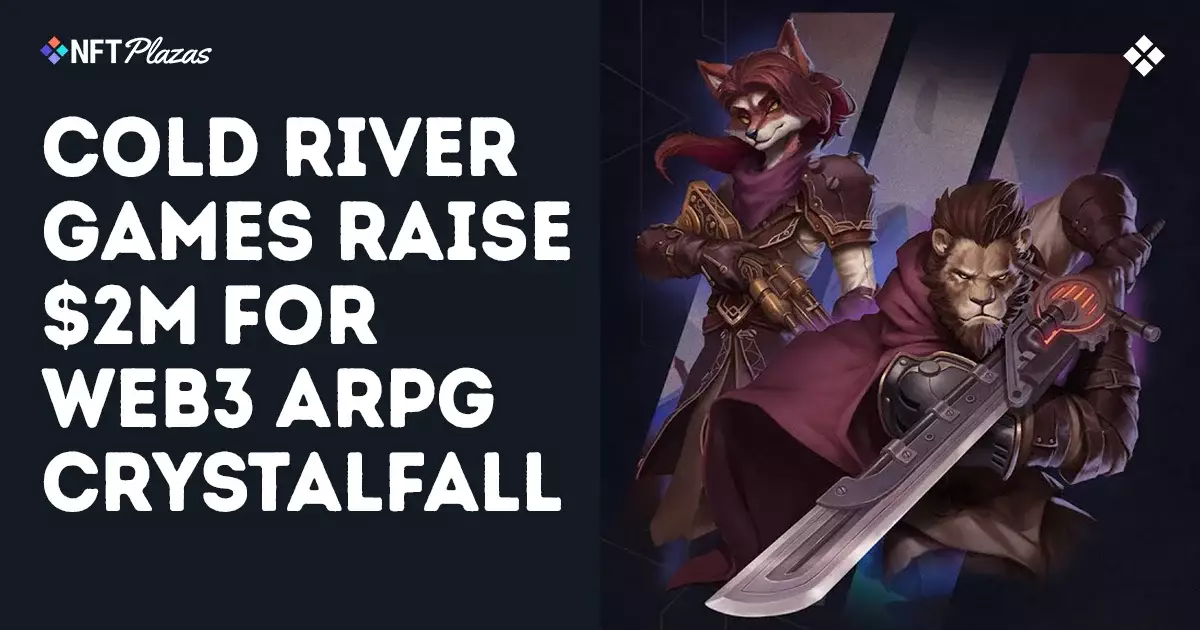The recent announcement of Cold River Games’ $2 million fundraising effort for their upcoming project, Crystalfall, epitomizes the overhyped aspirations surrounding Web3 gaming. While proponents tout blockchain integration as the dawn of a new era for interactive entertainment, closer scrutiny reveals that much of this enthusiasm is rooted in misguided optimism rather than tangible, sustainable innovation. The excitement over Crystalfall, a post-apocalyptic steampunk ARPG, ignores the fundamental Flaws in the industry’s blockchain-centric narrative, which is often driven more by hype than by real value.
Cold River’s decision to incorporate Avalanche for blockchain mechanics, especially in loot and barter economies, smacks of a flimsy attempt to capitalize on the trendy Web3 buzz. CEO Åke André’s emphasis on secure economies and loot progression seems to overlook the fact that integrating blockchain into complex game mechanics is riddled with practical challenges, including scalability, user experience, and most critically, player trust. As previous attempts to embed blockchain within gaming environments have repeatedly faltered, one must question whether this is genuine innovation or merely a misguided vanity project cloaked in the promise of decentralization.
Web3: Promising the Future but Delivering Disillusion
Looking at the broader landscape, the backing of Crystalfall by several serious investors, including Avalanche and CoinFund, underscores a misguided belief that blockchain technology inherently enhances gaming. Yet history warns us that many of these ventures are fleeting, driven by speculative hype rather than the pursuit of meaningful player engagement. The industry is at a crossroads where capital floods in with the illusion that blockchain will revolutionize how players interact with in-game assets, but the reality is that most players value seamless gameplay and genuine storytelling over cryptocurrency tie-ins.
Furthermore, the game’s claim to nostalgic, old-school ARPG gameplay set within a post-apocalyptic steampunk universe is a familiar formula. Unfortunately, relying on tried-and-true genres does little to address the fundamental deficiencies of current blockchain integration attempts. The real test is whether blockchain features genuinely enhance gameplay or simply serve as a Trojan horse for monetization strategies that alienate core audiences. The obsession with lootable skills and talent trees, while interesting, sidesteps the core issue: players are increasingly skeptical of blockchain’s role in entertainment, perceiving it as a distraction from quality content.
Generational Shift and Market Skepticism
The timing of Cold River’s funding success, amidst a tightened VC landscape for web3 projects, signals a dangerous misconception in the industry—that bubble-like investments will continue regardless of product viability. André’s assertion that “money was very easy to come by” and that the market is now more cautious points to a realization that these investments are unsustainable unless accompanied by genuine societal and technological utility. Far from pioneering a new gaming frontier, most blockchain-based titles are struggling to attract and retain players, and many critics argue that they exploit consumer familiarity with gaming to push dubious financial mechanics.
This scenario suggests that, despite superficial endorsements, the infrastructure for sustained blockchain gaming remains fragile. The hype is intensifying because investors are chasing the next big thing, but what they are actually betting on is vaporware dressed in the latest technological rhetoric. If the industry cannot deliver stable, engaging experiences that satisfy traditional gamers—who prioritize gameplay integrity over financial speculation—then any claims of a “new gaming era” are destined to falter.
Questionable Sustainability and the Future of Web3 Games
While Cold River Games boldly frames Crystalfall as a game augmented by blockchain to sustain its economy, this flouts the reality that most players seek escapism, not transactional economies. Integrating Web3 mechanics at the expense of gameplay quality risks undermining trust among gamers, who have already demonstrated skepticism toward these experiments. The hype surrounding blockchain-powered titles is often driven by a desire to lure speculators and early adopters rather than delivering meaningful entertainment.
In truth, the future of gaming will likely remain rooted in well-crafted narratives, innovative gameplay, and genuine community engagement. Blockchain and Web3 may eventually find their space—if they’re used to enhance rather than distract from core game design. Until then, claims that Web3 gaming will overhaul the industry should be viewed with caution, especially when the current landscape shows a pattern of over-promising, under-delivering, and ultimately, disappointing the fans who truly matter.
Despite the allure of new technology, the industry’s greatest challenge remains producing experiences that resonate authentically with players—something blockchain integration, as it stands now, has yet to accomplish convincingly.

